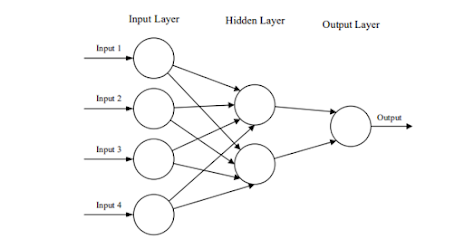It will help people interested in it to get an in-site in this topic and understand it with ease
So, before we start with the topic
Let’s first understand some important terms in this paper
IMPORTANT TERMINOLOGIES
Let’s understand
Piezoelectric ceramic materials
Lead zirconate titanate (PZT), barium titanate (BT), and strontium titanate (ST) are the most widely used piezoelectric ceramic materials. where ε is the relative permittivity or dielectric constant of piezoelectric ceramic materials and is defined as the dielectric displacement per unit electric field.
What is an Acoustic
Transducer?
An acoustic transducer is an electrical device that converts sound wave vibrations into mechanical or electrical energy.
As many of you must’ve guessed
Piezoelectric ceramics are used to make modern acoustic transducers.
Here we discuss the Effect of Temperature and Pressure on the Thickness Mode Resonant Spectra of Piezoelectric Ceramic
Thickness mode : the standing wave patterns produced are called
"modes". When a piezoelectric material is excited by an ac signal two series of resonance are observed. One is in radial mode and other is in thickness mode. The frequency in thickness mode(axial) has high resonance because piezoelectric material is designed to be driven in that direction.
Resonant spectra are emission spectrums resulting from the illumination of
a substance by radiation of a definite frequency or definite frequencies.
(And of course, resonance is a phenomenon when the matching vibrations of another object increase the amplitude of an object's oscillations)
The most commonly used piezoelectric material is PZT (Lead zirconate titanate)This is the structure of PZT for
reference
Now that some of the
important terms used in a research paper are discussed with an understanding of
what the paper discusses
THEORY
Here we use the Van Dyke circuit
model that’s recommended by the IEEE standard on piezoelectricity.
Now let’s understand The van Dyke first
The branch L1 , R1 , C1 represents the mechanical behaviour of the piezoelectric disc while C0 represents the electric nature.
For the above equivalent circuit
The resonant frequency (fr)
The anti-resonant frequency(fa)
And the C1 is represented by
The
characterization of piezoelectric ceramics is done using the resonance method
as mentioned in the IEEE standard on piezoelectricity. A small ac electrical
signal is used to excite an elastic wave in the piezoelectric via an
electromechanical coupling. Depending on the sample dimensions, the frequency
at which resonance occurs is observed by measuring the impedance of the
sample at various frequencies.
EXPERIMENTAL ARRANGEMENTS
The discs used here had dimensions
of, a diameter of 25 mm, a thickness of 2 mm, and a diameter to thickness ratio
of 12.5.
And as we know scientific
experiments are a little extravagant, the flat surfaces used in the sample are
coated with silver electrodes to facilitate an ohmic contact for measuring
electric properties
What is ohmic contact? just think about this for a little while the
answer is in the name itself Ohmic contact is a low resistance junction
(non-rectifying) that provides current conduction from metal to semiconductor
and vice versa. The current here increases /decreases linearly Theoretically!!!
Let’s have a look at
the experiment and understand the context of the paper through the experiment
conducted for the paper
First Resonant and anti-resonant frequencies are observed
at different temperatures with sufficient soaking, this process is repeated 10
times and then average values are computed, and average values are calculated to
eliminate errors.
For open channel flow metering, the
transducer is located at a maximum of 10m below the water surface. The head
pressure acting on the transducer affects its resonant frequency. A height of
10 m of water creates a head pressure of approximate 1 kg.cm^2.
Weights calibrated in terms of pressure were used for
simulating the head pressure acting on the transducers, and the weight to be
applied on the disc was calibrated using the maximum pressure and the area of
the disc.
The pre-calibrated weights are
applied to the piezoelectric disc and the values of resonant and anti-resonant
frequencies are observed using the circuit shown in the fig above.
Based on these practically obtained model parameters,
mathematical modelling using an equivalent circuit approach was implemented in
Simulink.
Check what’s Simulink after reading this blog
Below fig is what Simulink does i.e., make a relevant
equivalent circuit of the piezoelectric element.
The resonant frequency is inversely proportional to the
thickness of the piezoelectric disc. As pressure is applied to the
piezoelectric element, the thickness decreases and so there is an increase in
the resonant frequency. As the pressure acting on the piezoelectric disc
increases, the stiffness increases and so the resonant frequency increases. The
values of resonant and anti-resonance frequencies obtained from the model
response match with those obtained experimentally.
CONCLUSION
In this paper, a process condition-based equivalent circuit
model of the piezoelectric disk is developed. The process conditions and their
ranges considered are suitable for underwater applications. Here the required
data is experimentally obtained and the model parameters were computed and a
more realistic model was obtained.
NOTE:-This blog is meant for Educational Purpose only .We do not own any Copyrights related to images and information , all the rights goes to their respective owners . The sole purpose of this blog is to Educate, Inspire, Empower and to create awareness in the viewers. The usage is non-commercial(Not For Profit) and we do not make any money from it.
Write your Feedback here:
https://forms.gle/C3ybXMPPUaJBgP618
FOLLOW US ON:-
INSTAGRAM :
https://bit.ly/coep_blogs_insta
LINKEDIN:
https://bit.ly/coep_blogs_linkedIn
YOUTUBE:-
https://bit.ly/Coep_blogs_YouTube













No comments:
Post a Comment